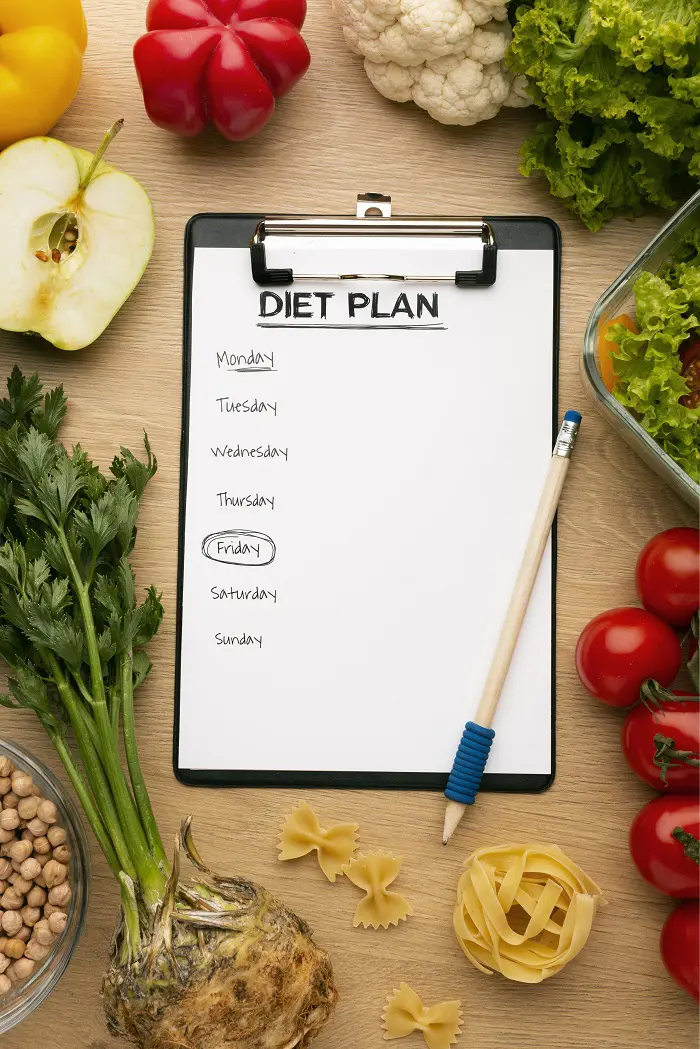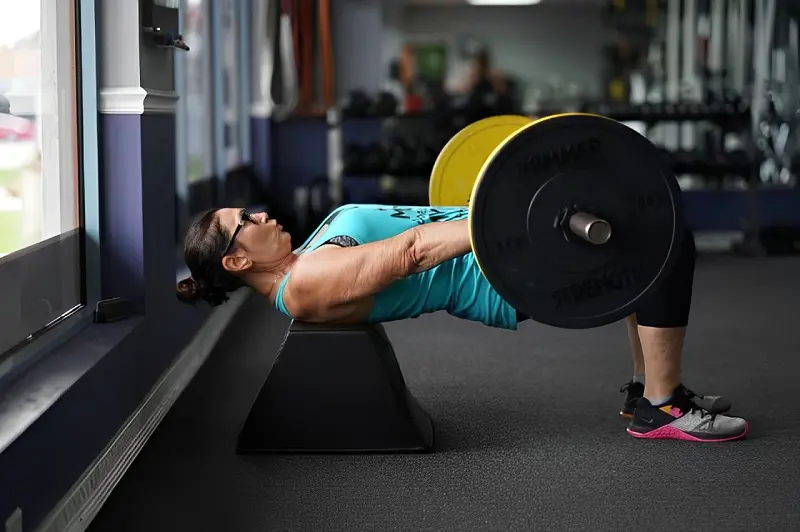How To Calculate Calorie Deficit For Weight Reduction

The term "calorie deficit" refers to burning more calories than we consume. It's a popular approach for losing weight and staying in shape.
Achieving a calorie deficit could be tricky, as it requires consistent tracking, healthy habits, and accurate calculations. So, let’s look into how to calculate calorie deficit and determine the ways to reach one.
How To Calculate A Calorie Deficit?

Various methods are available for determining calorie deficit. A popular one is the Mifflin-St Joer formula. Introduced by St Jeor and MD Mifflin in 1990, this formula estimates Basal Metabolic Rate (BMR), which refers to calories burned at rest.
This formula holds multiple factors into account - sex, age, weight, and height, making it stand out among generic calculating methods.
Through combining the BMR with our activity level, we now can figure out the calories needed to maintain our current weight, which then helps us dial in our calorie deficit.
Here is the Mifflin-St Joer formula to calculate the BMR:
In Males,
BMR = (10 * weight in kg) + (6.25 * height in cm) - (5 * age in years) + 5
In Females,
BMR = (10 * weight in kg) + (6.25 * height in cm) - (5 * age in years) - 161
After calculating the BMR value, then we can proceed to find the maintenance calories through Harris-Benedict formulae:
- Total calories needed (sedentary lifestyle with little to no exercise) = BMR * 1.2
- Total calories needed (lightly active with 1 - 3 days a week) = BMR * 1.375
- Total calories needed (moderately active with 6 - 7 days a week) = BMR * 1.55
- Total calories needed (very active with 6 - 7 days a week) = BMR * 1.725
- Total calories needed (extra active with 6 - 7 days a week and physical jobs) = BMR * 1.9
Due to various factors involved in calculation, the results can be different for people. This means that everyone’s calorie needs are different from each other. Hence, activities, meal plans, and exercises should be completely done according to your own needs in order to achieve weight loss.
What Is Considered Safe Calorie Deficit?

Generally, a calorie deficit of 500 per day is regarded as a good place to begin weight loss journey. By having 500 fewer calories, we can reduce 0.5 kg of weight in a week.
This number may seem small at first glance, but we are talking about weekly long-term progress. Slower weight reduction can be included in our long-term strategy without causing much complications.
Some individuals may also see no changes in the body during the first few weeks of implementing the 500-calorie deficit model. Others may witness a loss of water weight initially, which could create the illusion of losing body weight.
Effects Of Extreme Calorie Deficits
Losing weight by small margins is healthier compared to drastic weight loss measures. People might be tempted to get more than 500 calorie deficits, but it can harm our overall well-being.
Here are some side effects of incorporating extreme calorie deficits for our body:
- Dehydration
- Headache
- Nausea
- Mood Swings
- Intense Hunger
- Cold Sensitivity
- Constipation
- Fatigue
- Reduction in Metabolic Rate
- Hair Loss
To play it safer, we could also try a 200-calorie deficit per day paired with workout sessions to support our weight reduction journey.
How To Be Calorie Deficit At Home?

Reaching a calorie deficit takes serious commitment in our daily lives, but it’s totally doable. We might face a few hurdles while working toward it, but staying consistently active is key to achieving and maintaining that deficit for efficient weight loss.
Here are the major factors that are crucial for getting a calorie deficit at home:
1. Balanced Diet
The first, and major thing that everybody needs to reach and maintain a good calorie deficit is to regularly have a balanced diet. Consuming nutritious foods like fruits, green veggies, legumes, and whole grains as part of everyday meals is healthy for us.
We should also have low-fat dairy products, poultry, seafood, nuts, and lean meats in order to maintain calories deficit in our bodies. Moreover, prioritize home-cooked foods instead of going out too much - home-cooked meals are safer for health and feature better nutritious quality.
Stay away from processed foods while sticking to a calorie deficit plan. These foods can sneak in extra calories thanks to their high presence of fat, salt, and sugar content. Moreover, they offer a poor calorie-to-nutrient ratio, implying we’re getting more calories without reaping much nutritional value.
2. Exercise Sessions
The benefits of exercise sessions shouldn’t be overlooked, especially since they help maintain a calorie deficit. Regular workouts play a key role in sustaining a healthy calorie deficit, making weight reduction more effective.
A moderate session of 150 minutes per week can be all we need to fulfill our exercise needs to remain active and fit. Cardio exercises like jogging in place, indoor cycling, and jumping jacks can be incorporated into our moderate workout sessions.
If we are up for intense workout sessions, we could hit our exercise goals with just 75 minutes a week. Throw in burpees, mountain climbers, and some weight-lifting moves at home to break a sweat and stay in a healthy calorie deficit.
3. Intermittent Fasting
Intermittent Fasting is a fantastic method for reaching a calorie deficit, especially if we believe that there is more calorie consumption than burning. By stopping to eat for some time, we can control our calorie intake level and achieve weight reduction.
We can try out various forms of intermittent fasting, it’s all up to our preferences and bodily needs. Alternate-day fasting can be one way, which features us taking little to no calories on alternate days. The 5:2 fasting method sees us taking food for 5 days, and then fasting for 2 days.
Drastic measures could include periodic fasting, where we cut down on calorie intake for several days in a row. On the other days, we make up for it by eating heartier meals to balance things out. Every method has its own pros and cons, but these approaches can be pretty effective for achieving and maintaining a calorie deficit.
4. Maintain Hydration Level
While maintaining calorie deficit level, it is important to remain hydrated to avoid the feelings of starvation. We can feel hungry while being on a calorie deficit, and it could lead to increased craving for snacks.
To reduce the consumption of these snacks, we can control our appetite by drinking more water. Foods like cucumber and watermelon can also be good alternatives to help hydrate.
Good hydration keeps our metabolism healthy, which can help burn calories. So, if we are feeling hungry at unusual times, understand that we can just control it with some water. Hence, grab a glass of water and drink it to curb our appetite without going for heavier meals.
Other Methods To Be In A Calorie Deficit

Aside from balanced diet, regular workout sessions, and intermittent fasting, there are other methods we can use to achieve a calories deficit for faster weight loss results.
Here are some of these methods that can help us be in a calorie deficit:
1. Cognitive Behavioral Therapy
This therapy prioritizes changing our thought patterns and behavior to help us reach calorie deficit. This therapy fights the psychological barriers that affect weight management.
CBT aids to identify triggers that could lead to overeating issues. Maybe stress or anxiety may be impacting our cravings. Once the therapist successfully identifies these triggers, then we can change our behaviors for a better strategy to reduce weight.
This therapy also teaches us about food mindfulness, helping us become more aware of what we're eating and what it contains. This makes us more probable to choose healthier snacks and avoid mindless consumption.
2. Acceptance And Commitment Therapy
If we are looking for a values-based approach, the "Acceptance and Commitment" therapy may be fantastic in helping us keep consistent calorie deficits. ACT focuses on what matters most to us and aligns those values with our actions, ultimately making it easier to stick with a calorie deficit in the long term.
ACT also does not suppress feelings of cravings but tells us to accept these feelings without negativity. This mindset makes us feel less pressure or guilt when we try to control our cravings.
3. Motivational Interviewing
This is the third fantastic approach for people who desire to maintain a calorie deficit. It taps into people's motivation for lasting health changes. It emphasizes empathy, making them feel heard and understood. This motivates the person to adopt healthier eating habits and stick to regular workouts.
Instead of trying to tell what a person “should” do, Motivational interviewing therapy encourages individuals to explore their own reasons for wanting to reduce their weight. This self-reflection style works great for motivating people for long-term goals.
4. Using Electronic Apps
With today's tech advancements, we’re seeing massive innovations in the health sector, including in how we manage our calorie deficit and intake. Smartphones running on Android and iOS offer variety of apps that help us easily calculate, track, and maintain our calorie deficit.
MyFitnessPal, Cronometer, Calory, Lifesum, Noom, FatSecret, and Lose It! are some well-known apps in the market. They could track calorie intake, promote healthier eating habits, and ultimately help with weight reduction.
Why Are We Not Losing Weight On A Calorie Deficit?

There may be situations where you could see no measurable results even after practicing various calorie deficit techniques for several weeks. There may be underlying conditions that could be preventing you from seeing positive signs of weight loss. Here are some of those conditions:
1. Lack Of Proper Sleep
A sound sleep for 6 hours is a major indicator of good health. A night of good sleep helps the body recover from fatigue, recharge cells, improve mood, and enhance cognitive function.
When we sleep well, our cortisol level also falls down. These hormones are our stress hormones, and an increase in them can negatively affect our metabolic rate. More stress also means more activity during sleep.
2. Intake Of Medicines
Taking certain medicines may also result in weight gain issues, which could disturb the calorie deficit process. Taking anti-depressants, insulin, or other birth control medicines may increase weight and make it challenging for weekly reduction.
3. Water Retention
A high intake of sodium can cause water retention, which may create the illusion of fat loss. Bad hydration levels and stress can also contribute to more water retention, hindering the shedding of pounds.
Drink plenty of water and reduce intake of salty foods to prevent this situation from arising in the first place.
4. Hormonal Changes
Sometimes, hormonal changes can also affect our calorie deficit since it would result in changes in metabolism. For women, menopause can be the major factor for changes in hormones.
Other health conditions that may cause hormonal imbalances are diabetes, stress, thyroid illness, and steroid use.
5. Consumption Of Alcohol
Alcohol makes it harder for us to lose weight due to the presence of empty calories. This calorie type messes with the calorie deficit needed for healthy weight loss each week.
Even just one or two drinks can ramp up cravings and make us feel less satisfied, leading to an urge for salty snacks. This can mess with water retention and add stress.
6. Inconsistency In Calorie Intake
Being inconsistent with our calorie intake can seriously mess up our calorie deficit. Those so-called “cheat days” with junk food packed with empty calories can throw off our weekly progress in a big way.
Inconsistent intake of calories automatically ensures unpredictable results, and this can be the reason why we do not see weight loss although we have been keeping our calorie deficit intact.
Disclaimer: The content presented in this article is only intended to be used for information purposes. It should not be taken as a form of medical / clinical advice.
Recent posts
How To
How To
How To Do Burpee Properly For Beginners At Home
Burpee is a combination of two-part exercise, pushups followed by a leap in the air and squats. It is a challenging exercise that works many of the major muscle groups in your body. Doing multiple reps of this exercise back-to-back could be quite exh...
How To
How To Get Rid Of Neck Hump With Exercises At Home
A neck hump is a curved appearance in the back of our neck that may lead to an unflattering look and discomfort. Also known as Dowager’s Hump or Kyphosis, this condition is often caused by poor posture, aging, or weight gain. Fixing it could ta...
How To
A Guide On How To Do Dumbbell Pullover Exercise Properly
A dumbbell pullover is a well-known strengthening exercise loved by bodybuilders for working the chest and back. It also builds your lats and triceps, making them an ideal addition to your strength workout routine. When you are in your first attempt,...
How To
How To Do Clamshell Exercise Properly For Strong Lower Body
Strengthen your glutes, core, and legs with the clamshell workout. Practicing it consistently can offer lots of benefits, from reducing back pain to improving balance. While it might seem confusing for a newcomer, this exercise is quite simple - lie ...
How To
How To Do Glute Bridge Exercise Correctly For Beginners
Glute bridge is a fantastic exercise that targets the glutes, core, and hamstrings. People practice it to strengthen their glutes, improve core stability, and even reduce back pain. To truly reap these benefits, though, we have to perform it correctl...
How To
How To Do Hip Thrusts: Methods, Benefits And Types
The hip thrust is a great bodyweight move for building strong glutes and a solid core. Also called the hip thruster, it’s great for improving posture and easing lower back pain. To get the most out of it, nailing the form is key. Everything fro...







